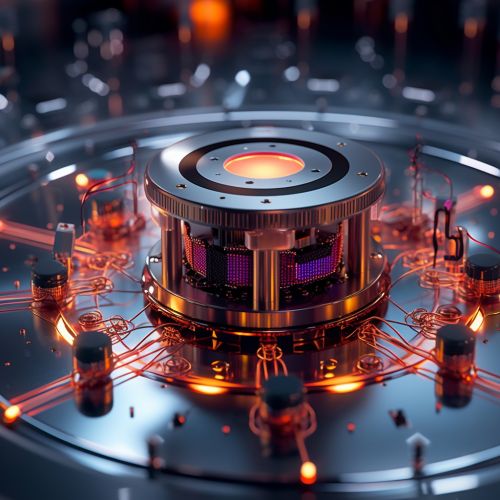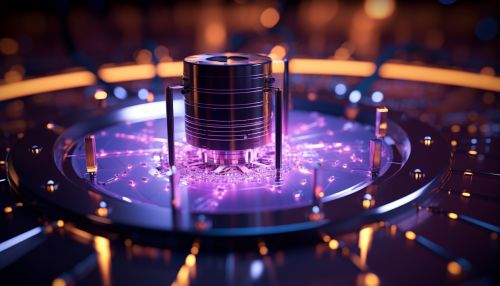The Physics of Quantum Computing with Ion Traps
Introduction
Quantum computing is a rapidly advancing field in the realm of computer science that leverages the principles of quantum mechanics to process information. A significant aspect of this field is the use of ion traps to store and manipulate quantum information.


Quantum Computing
Quantum computing is a computational paradigm that utilizes quantum bits, or qubits, as the fundamental unit of information. Unlike classical bits, which can be either 0 or 1, qubits can exist in a superposition of states, enabling them to be both 0 and 1 simultaneously. This property, along with entanglement and quantum interference, allows quantum computers to perform complex calculations at a speed unattainable by classical computers.
Ion Traps in Quantum Computing
Ion traps are devices used to capture and manipulate ions, which can be used as qubits in quantum computing. The ion trap's ability to isolate ions from their environment makes them an ideal platform for quantum computing, as it minimizes the interaction with the environment, reducing decoherence and increasing the qubits' coherence time.
Types of Ion Traps
There are two primary types of ion traps used in quantum computing: Paul traps and Penning traps. Paul traps use a combination of static and oscillating electric fields to trap ions, while Penning traps use a combination of static electric and magnetic fields.
Ion Trap Operation
The operation of an ion trap in quantum computing involves several steps. First, ions are loaded into the trap and cooled to near absolute zero using lasers in a process known as laser cooling. Once the ions are cooled, they form a crystal-like structure due to their mutual repulsion and the confining forces of the trap.
Quantum information is then encoded into the ions by manipulating their internal energy levels using laser or microwave pulses. These pulses can create superpositions of states or entangle multiple ions, allowing for the execution of quantum gates - the building blocks of quantum algorithms.
Quantum Gates and Algorithms
Quantum gates are the fundamental operations in quantum computing. They are analogous to classical logic gates, but with the added complexity of operating on qubits in superposition states. Common quantum gates include the Pauli gates, Hadamard gate, and the CNOT gate.
Quantum algorithms are sequences of quantum gates designed to perform a specific computational task. Some well-known quantum algorithms include Shor's algorithm for factoring large numbers and Grover's algorithm for unstructured search.
Challenges and Future Directions
Despite the promising capabilities of ion trap quantum computers, there are several challenges to be addressed. These include scaling up the system to accommodate more qubits, improving gate fidelity, and reducing operational errors.
The future of quantum computing with ion traps looks promising, with ongoing research focusing on overcoming these challenges and improving the performance and capabilities of ion trap quantum computers.
